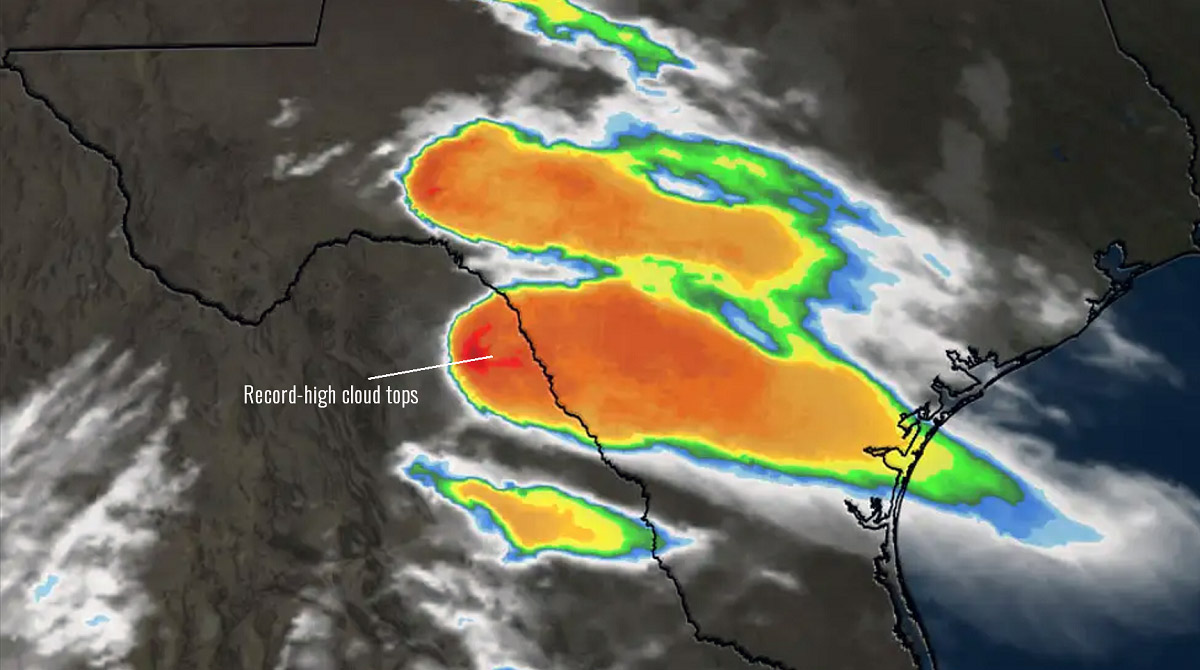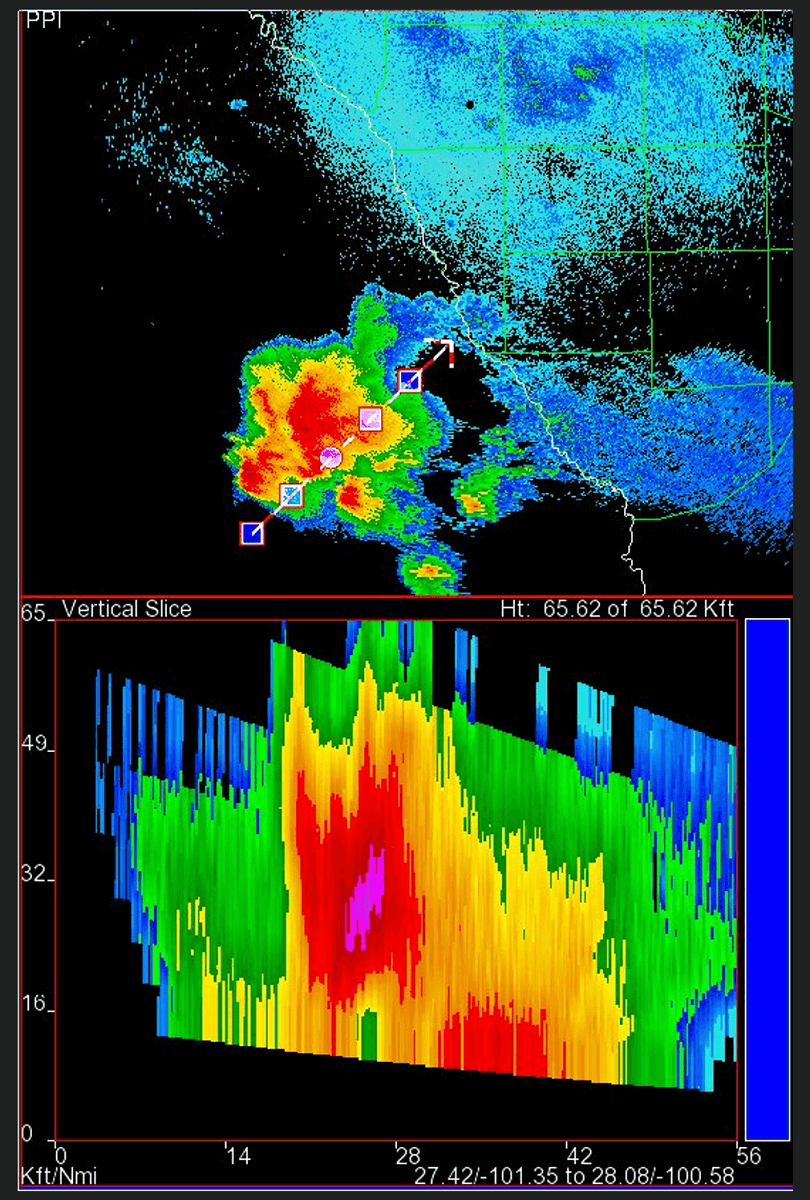How high into the sky can thunderstorms develop – what are the highest ever measured thunderstorms?
The most vigorous updrafts reach the tropopause and produce overshooting tops. The highest storms in the world have been recorded in the tropics, where the tropopause is the highest (15-18 km). Thunderstorms reaching 20-22 km high have been recorded there.
On July 23, 2010, in Vivian, South Dakota, a severe supercell thunderstorm produced the world record hailstone (20 cm in diameter!) and reached a maximum height of 17 km! This is all the more remarkable since this storm was far from the tropics, with the tropopause at a lower altitude, indicating a powerful updraft.

View of thunderstorms from space. Image by NASA
On May 26, 2016, a severe supercell thunderstorm on the Mexico-USA (Texas) border was measured at 20.7 km peak height; the storm was so intense that lightning was produced up to 95 km from its core!
The infrared satellite imagery revealed a textbook appearance of a cold U-shape signature. This is a typical sign when we observe extremely severe thunderstorms, producing very large or giant hail, pushing its intense towers high into the lower part of the Stratosphere, above the equilibrium level.

The radar scan and its vertical cross-section indicate how high the precipitation was observed in this storm. The top parts of the cloud went well above 65 kft (or 20 kilometers).
The hail core was also unusually high, roughly 25-40 kft (approximately 7.5-12 km).

Remember that the average cruising altitude of commercial airplanes is 11-12 km, so these thunderstorms can reach up to twice the altitude you would typically reach on your flights!
Related topics:
The Science Behind Convection: How Does it Work?
Thunderstorm basics: Understanding the power of nature
Understanding overshooting top in thunderstorms